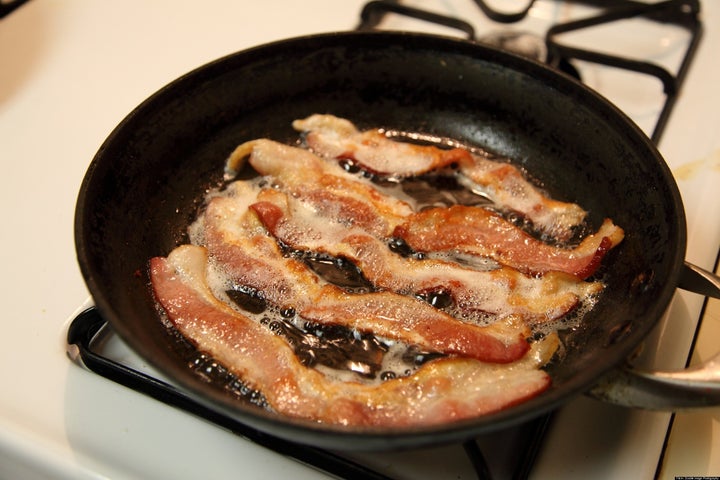
The Houston Ship Channel is clogged with beef fat. Unlike petroleum, which has a colorful sheen on the water's surface, beef fat turns into a solid cake, looking like a waxy ice flow.
There's a lesson there. The take-home message is that animal fat is solid at room temperature, and that is a sign that it is loaded with saturated fat -- or "bad" fat, because it raises your cholesterol level and increases the risk of artery blockages.
When I was a child growing up in North Dakota, my mother cooked bacon for her five children. When it was done, she pulled the hot strips out of the pan and set them on a paper towel to drain. She then carefully picked up the frying pan and poured the hot grease into a jar, aiming to save it for later. But she did not store the jar of bacon grease in the refrigerator; she simply put it in the cupboard. She knew that as it cooled, it would turn into a waxy solid. The next day, she spooned some of the bacon grease into a pan and fried eggs in it. It's amazing that any of her children lived to adulthood, but that is the way we ate until we learned better.
Every year, the average American swallows 200 pounds of meat, 33 pounds of cheese, and nearly 60 pounds of added fats and oils. Within minutes of a fatty meal, the arteries become stiffer, the blood becomes more viscous and our bodies look -- on a small scale -- a bit like the Houston Ship Channel.
It was not always this way. Meat intake is 75 pounds higher now than a century ago when the Department of Agriculture first started keeping records. Cheese has increased by nearly 30 pounds, and added oils have increased, too. Here is why:
Increased disposable income. We have more money to spend on food than we did in the past. It's actually a smaller fraction of our overall expenditures than ever.
Dining out. Particularly with the advent of fast food and pizza restaurant chains, which emphasize meat, cheese and fried foods, there is grease galore on our plates. Nearly half of all our meals are eaten out of the home.
Government programs. Subsidies for the production of meat and cheese reduce the costs of serving up fast food and pizza, and commodity programs send these foods into schools and hospitals.
As a doctor, let me encourage us all to keep that image of floating fat firmly in our minds. If it causes us to limit the amount of meat in our diet, we'll be a lot better off.